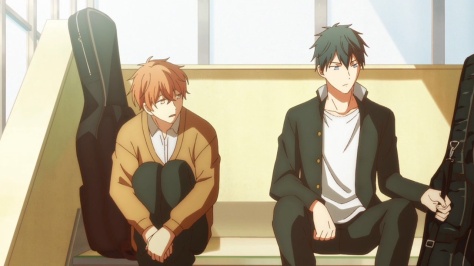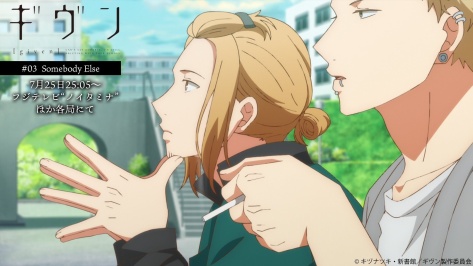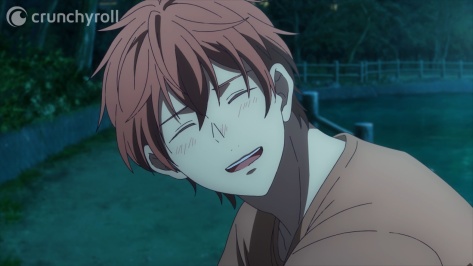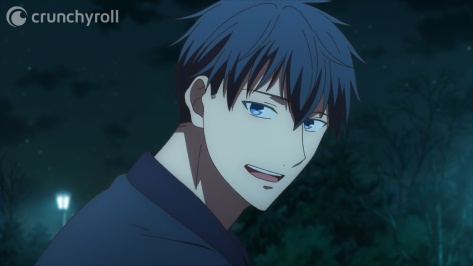By now the connection between live action Boys’ Love television/web series and anime is no longer a kept secret among high school girls, but a worldwide passion for all ages and cultures.
Only in recent years have live-action adaptations and films started to reflect the influence of anime and manga on what we perceive as viewers. Whether it’s spiked haired boys with interesting hair color, or the slight build or beautiful features of (womanly) submissive types of gay men as presented in the modern series. None of it would be possible without anime. Ironically there aren’t that many mainstream gay animes in existence. Instead, manga seems to be the medium to go for man on man romance, but every once in a blue moon an anime comes along that features strong yaoi or gay themes, which is made available for international viewing.
“Gravitation” was one such show; as well as gender bender “Ranma 1/2” that seemed to reflect on the animation houses that more unique and queer content does wonders for their genres. But it wasn’t until “Yuri on Ice” raised the bar with its comedic depiction of a gay figure skater with a crush on the world champion, that shattered the existent prejudices on the various possibilities of gay anime. For a generation who didn’t grow up with uncensored anime, it was an eye-opening experience to see its success. Soon the anime craze was literally everywhere, and other recreated models sprang up. One such anime that broke away from the recurring comedy and light-hearted mood with a much more heavy plot line was the “Given” franchise. With rock music as its soul and the four moody students making it huge, “Given” elevated gay anime to another tier with a more cinematic approach.
“Given” is based on the ongoing manga of the same name by Natsuki Kizu that started in 2013. The popularity of the manga with its two sets of diverse love couples and interesting side characters that surround them have spawned an 11 episode anime and an hour film one year later (all available on Crunchyroll). Ironically, anyone who has read the manga would know the film is the fifth volume of manga word to word; which makes me wonder if a second film is in the works. It would be interesting, but this review will focus on the anime and film that exist.


The manga series and the anime both feature four men at different stages of life and maturity. Two of them are sixteen- years old studying in High School and the remaining two are from the University. Here the sixteen-year-old singer/rhythm guitarist Mafuyu Sato becomes the focus of the anime as opposed to the manga where he shared equal screen time with the other three. It is a clever and attractive way to present the story since he is the most relatable and endearing character of the band. Next is main guitarist Ritsuka Uenoyama, a stoic young man who discovers Sato and brings him into the band. Twenty-year-old drummer Akihiko Kaji who is a Lothario; bassist (with an silent crush on Kaji), twenty-two-year old bassist Haruki Nakayama who is the eldest member of the gang and acts as their leader, form the rest of the crew. The four go through all the various stages of becoming a true band- starting from the awkward first meeting, underestimating the new talent, having a fall-out over small disagreements and eventually coming together for a song, this group does it all!
That might sound simplistic but with anime company Lerche(“Assassination Classroom”, “Danganronpa”) at the helm it is anything but exceptional. The anime utilizes color schemes and music patterns to give the manga a second breath of life, based on themes of loss, curiosity, lust and love. I was really surprised with how well the thirty-minute episodes create different moods based on which of the four is getting attention. If it’s Sato- the colors are somber for his past flashbacks and bright if it is his present times. Ritsuka and Haruki have more normal color schemes for the settings and almost depressing music playing in the background, since even though they are the most mature; the poor guys are still the saddest ones in the band. Kaji’s settings are always dark or too bright to the point of artificial feeling, which sums up his personality.
You won’t feel dizzy, as the anime swiftly switches POV’s and slips in and out of, flashbacks with the rapid color changes or soft focus; those are just indicators that these changes are happening. The only inconsistency exists in the presumption that the viewer has alrwady read the manga and knows why the characters are the way they are. Some things are unfortunately lost, as we are relegated to see bits and pieces of Ritsuka’s personal life, but to be honest the focus isn’t on him, unless Ritsuka is accompanied by Sato. The shortened portrayals of his sister and their band friend who mentors them, doesn’t show their proper development. The anime itself does feel a bit lopsided, as we watch Ritsuka and Sato falling for each other while Kaji and Haruki dance around their mutual sexual attraction. We as viewers are left with longer than normal glances between the two older members of the band and tongue in cheek dialogue which alludes to their real feelings.
The anime presents itself differently from the manga, where I feel it provided more romantic inclinations than the manga. The manga focuses more on the progression of the characters through their first year as a band while they are dealing with their individual issues; while the anime focuses on Sato and his grief over the suicide of his gay lover. The interesting part is that the heavier plot goes to Ritsuka and Sato who are both teenagers in high school. On one side we have Sato who has experienced love and loss with his dead boyfriend along with Ritsuka who is withdrawn and more introvert in everything; against the two university seniors who both seem like Casanovas but for different reasons. In the manga these reasons are explained, but in the anime they are left to the viewer’s discretion; which I felt was a real disservice to their characters.


The anime doesn’t feel rushed, instead it takes its time setting the characters while failing to explain some prudent details; which later color my view of them when they are revealed in the movie. This obviously brings us to the film. Unfortunately, the film does feel rushed as the focus shifts to Kaji and Haruki and they try hard to compensate for their lack of plot in the anime with this hour-long film (I use the word loosely because that’s what it is called). It felt more like an extra long episode (think “Demon Slayer – The Movie” and you’re not far off). Haruki is still very much in love with Kaji but silently dealing with it. He becomes overwhelmed by a drunken Kaji in the opening credits itself. Kaji forces himself on Haruki who, though reluctant and confused, doesn’t refuse the physical acts. It’s the miserable expression on Kaji’s face that makes him realize what he is doing. This scene of calloused passion makes little sense to me as a viewer of the anime; but having read the manga I’m aware that Kaji has secretly been in love with Haruki as well. Does his refusal to take “No” as an answer make the situation right; honestly it doesn’t but it does explain the lost puppy eyes as he parts Haruki’s legs. It’s bold for an anime to show any of this and I appreciate that as well as the next scenes of regret and despair that both men face after it.
Does that make sense? Not really, and it would if we had been given any insights to Kaji’s motivations and we only get a hint to his life through the appearance of the dark haired Ugetsu Murata at the end of the season. Again, the movie compensates for this by focusing on Kaji’s life as a trained violinist who lost his love for music as he began his relationship with Ugetsu (similar to Ritsuka who also fell out of love with music before hearing Sato sing). He is disillusioned and lonely as he and Ugetsu break up when Ugetsu intentionally hurts him by having sex with another man. This causes Kaji to leave his house and exist in trysts with other people before appearing on Haruki’s doorstep. Confused, because I was? I wish these scenes had been depicted in a better manner and that they had spent equal amounts of time on Ugetsu, Kaji, and Haruki because I was more invested in Ritsuka and Sato’s story (who barely have any lines in the film) than this morbid love triangle.
Apparently there is a seventh volume of the manga coming soon and hopefully that offers fans something sweet to read. Because the movie surely left me disappointed. Choppy scenes, stilted moments of thoughtless lust and overdramatic vestiges of loneliness fell flat with me.
Rating- Anime (4 out of 5)
Film (3 out of 5)

